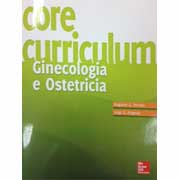349. Vaginal delivery in SARS-CoV-2 infected pregnant women in Northern Italy: a retrospective analysis.
Ferrazzi E, Frigerio L, Savasi V, Vergani P, Prefumo F, Barresi S, Bianchi S, Ciriello E, Facchinetti F, Gervasi MT, Iurlaro E, Kustermann A, Mangili G, Mosca F, Patanè L, Spazzini D, Spinillo A, Trojano G, Vignali M, Villa A, Zuccotti G, Parazzini F, Cetin I. - 1.BJOG. 2020 Apr 27. doi: 10.1111/1471-0528.16278.
Abstract
OBJECTIVE: To report mode of delivery and immediate neonatal outcome in COVID-19 infected women.
DESIGN: This is a retrospective study.
SETTING: Twelve hospitals in northern Italy.
PARTICIPANTS: Pregnant women with COVID-19 confirmed infection who delivered.
EXPOSURE: COVID 19 infection in pregnancy.
METHODS: SARS-CoV-2 infected women who were admitted and delivered during the period 1-20 march 2020 were eligible. Data were collected from the clinical records using a standardized questionnaire on maternal general characteristics, any medical or obstetric co-morbidity, course of pregnancy, clinical signs and symptoms, treatment of COVID 19 infection, mode of delivery, neonatal data and breastfeeding MAIN OUTCOME AND MEASURE: Data on mode of delivery and neonatal outcome RESULTS: 42 women with COVID-19 delivered at the participating centres: 24(57,1%, 95% CI= 41,0-72,3) delivered vaginally. An elective cesarean section was performed in 18/42 (42,9%, 95%CI 27,7-59,0) cases: in 8 cases the indication was unrelated to COVID-19 infection. Pneumonia was diagnosed in 19/42(45,2%, 95%CI 29,8-61,3) cases: of these 7/19(36,8%,95CI 16,3-61,6) required oxygen support and 4/19(21,1%,95%CI=6,1-45,6) were admitted to a critical care unit. Two women with COVID-19 breastfed without a mask because infection was diagnosed in the post-partum period: their new-borns tested positive for SARS-Cov-2 infection. In one case a new-born had a positive test after a vaginal operative delivery.
CONCLUSIONS:
Although post-partum infection cannot be excluded with 100% certainty, these findings suggest that vaginal delivery is associated with a low risk of intrapartum SARS-Cov-2 transmission to the new-born.
This article is protected by copyright. All rights reserved.
